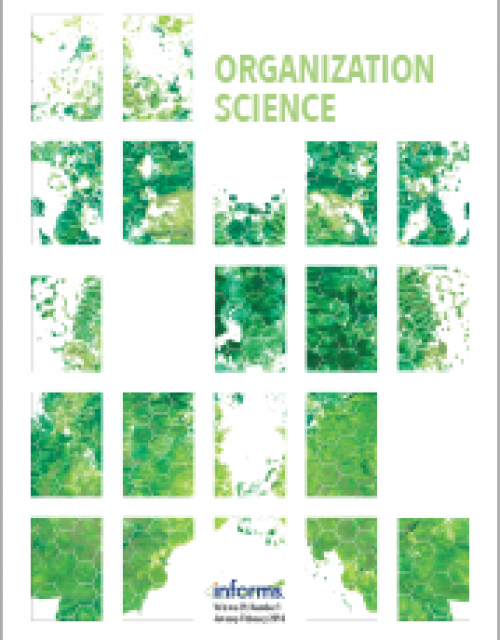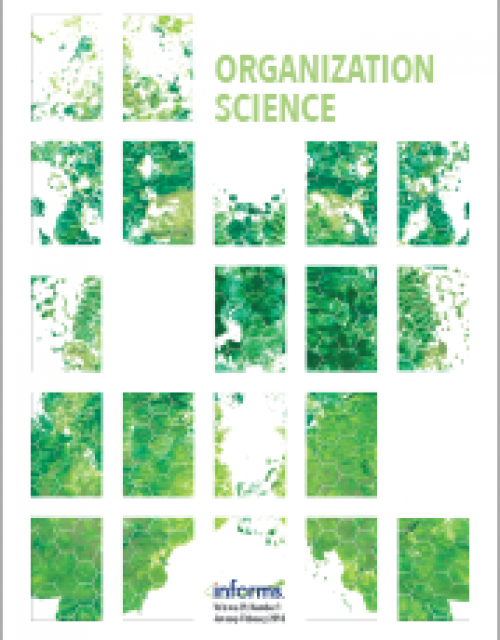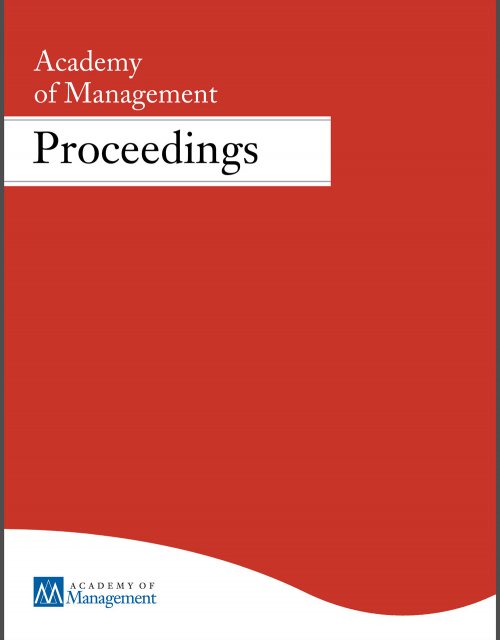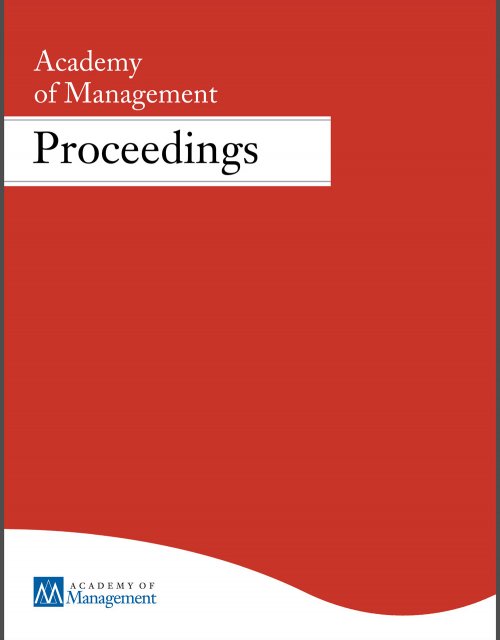Publication records
Subject(s)
Economics, politics and business environment; Information technology and systems; Technology, R&D management
Keyword(s)
Fiber optic technology, state aid, ex-post evaluation, efficiency, OECD countries
JEL Code(s)
C51, C54, H25, L52, O38
The deployment of new broadband networks (NBNs) based on fiber-optic transmission technologies promises high gains in terms of productivity and economic growth, and has attracted subsidies worth billions from governments around the world in the form of various state aid programs. Yet, the effectiveness and the efficiency of such programs remains largely unstudied. We employ panel data from 32 OECD countries during 2002-2019 to provide robust empirical evidence of both. We find that state aid significantly increases NBNs by facilitating the deployment of new connections to 22% of households in the short term and 39.2% in the long term. By comparing the actual amounts of state aid support to the estimated impact on GDP growth, we also find it to be highly cost efficient, as the programs break even after three years on average.
View all ESMT Working Papers in the ESMT Working Paper Series here. ESMT Working Papers are also available via SSRN, RePEc, EconStor, and the German National Library (DNB).
Pages
35
ISSN (Print)
1866–3494
Subject(s)
Management sciences, decision sciences and quantitative methods; Product and operations management; Technology, R&D management
Keyword(s)
Data, machine learning, data product, pricing, incentives, contracting
This paper explores how firms that lack expertise in machine learning (ML) can leverage the so-called AI Flywheel effect. This effect designates a virtuous cycle by which, as an ML product is adopted and new user data are fed back to the algorithm, the product improves, enabling further adoptions. However, managing this feedback loop is difficult, especially when the algorithm is contracted out. Indeed, the additional data that the AI Flywheel effect generates may change the provider's incentives to improve the algorithm over time. We formalize this problem in a simple two-period moral hazard framework that captures the main dynamics among ML, data acquisition, pricing, and contracting. We find that the firm's decisions crucially depend on how the amount of data on which the machine is trained interacts with the provider's effort. If this effort has a more (less) significant impact on accuracy for larger volumes of data, the firm underprices (overprices) the product. Interestingly, these distortions sometimes improve social welfare, which accounts for the customer surplus and profits of both the firm and provider. Further, the interaction between incentive issues and the positive externalities of the AI Flywheel effect has important implications for the firm's data collection strategy. In particular, the firm can boost its profit by increasing the product's capacity to acquire usage data only up to a certain level. If the product collects too much data per user, the firm's profit may actually decrease, i.e., more data is not necessarily better.
View all ESMT Working Papers in the ESMT Working Paper Series here. ESMT Working Papers are also available via SSRN, RePEc, EconStor, and the German National Library (DNB).
Pages
48
ISSN (Print)
1866–3494
Subject(s)
Economics, politics and business environment; Information technology and systems
Keyword(s)
online markets, price comparison websites, price dispersion, price competition, platforms, consumer search, consumer welfare
JEL Code(s)
L11, L86, D43
The large and growing industry of price comparison websites (PCWs) or “web aggregators” is poised to benefit consumers by increasing competitive pricing pressure on firms by acquainting shoppers with more prices. However, these sites also charge firms for sales, which feeds back to raise prices. I find that introducing any number of PCWs to a market increases prices for all consumers, both those who use the sites, and those who do not. I then use my framework to identify ways in which a more competitive environment could be achieved.
Volume
62
Journal Pages
1081–1110
ISSN (Online)
1468-2354
Subject(s)
Technology, R&D management
Keyword(s)
Patents, intellectual property rights
This article summarizes the century-old debate whether a patent system spurs innovation or is rather a burden to society.
Volume
74
Journal Pages
6–9
Subject(s)
Technology, R&D management
Keyword(s)
Selection, novelty, decision-making, innovation, panel
We examine how groups fall prey to the sequence effect when they make choices based on informed assessments of complex situations, for example, when evaluating research and development (R&D) projects. The core argument is that the temporal sequence of selection matters because projects that appear in a sequence following a funded project are themselves less likely to receive funding. Building on the idea that selecting R&D projects is a demanding process that drains participants’ mental and emotional resources, we further theorize the moderating effect of the influence of the timing of the panel meeting on the sequence effect. We test these conjectures using a randomization in sequence order from several rounds of R&D project selection at a leading professional service firm. We find robust support for the existence of a sequence effect in R&D as well as for the moderating effect. We further explore different explanations for the sequence effect and how it passes from the individual to the panel. These findings have broader implications for the literature on innovation and search in general and on group decision making for R&D, specifically, as they suggest that a previously overlooked dimension affects selection outcomes.
Copyright © 2021, The Author(s)
Volume
32
Journal Pages
987–1008
Subject(s)
Management sciences, decision sciences and quantitative methods; Strategy and general management
Keyword(s)
Reinforcing processes, quality, performance evaluation, movie industry, luck
When does market success indicate superior merit? We show that when consumer choices between products with equal prices depend on quality but also on past popularity, more popular products are not necessarily of higher quality. Rather, a medium level of popularity may be associated with lower quality than lower levels of popularity. Using a formal model we show that this kind of non-monotonic association occurs when reinforcing processes are strong. More generally, a dip can occur when outcomes depend on both quality and resources and the latter are allocated bimodally, with some being given a lot of resources and most receiving little. Empirically, we illustrate that such a dip occurs in the association between movie theater sales and ratings. The presence of a dip in the outcome-quality association complicates learning from market outcomes and evaluation of individuals and new ventures, challenges the legitimacy of stratification systems, and creates opportunities for sophisticated evaluators who understand the dip.
Copyright © 2021, The Author(s)
Volume
32
Journal Pages
1079–1099
Subject(s)
Human resources management/organizational behavior
There is a growing interest in the concept of employer attractiveness. Yet, research appears to be unsystematic in how it conceptualizes and studies the phenomenon. In this paper, we argue that thus far most research on employer attractiveness has combined perspectives about employer attractiveness of both prospective employees and for exiting employees, making therefore little differentiation with a reference to the question: For whom is the employer attractive? In this paper, we argue that this is problematic considering existing evidence signaling that there are differences in the employer attractiveness attributes between the two groups. With this paper, we aim to extend the literature on employer attractiveness by shifting the conversation to the perceptions of employees. We systematically review 48 articles on employer attractiveness from the employee perspective, and offer a model, capturing Inputs, Mediators and Outputs (IMO) of the concept. The paper concludes with a discussion of what our findings mean for future research and practice.
With permission of the Academy of Management
Volume
2021
ISSN (Online)
2151-6561
ISSN (Print)
0065-0668
Subject(s)
Strategy and general management
Superior profit usually depends on capturing opportunities that rivals fail to identify or utilize. A key challenge for strategists is how to be both different and viable. Prior research has tended to associate contrarian opportunities with rivals’ behavioral failures. Herein, we argue that contrarian opportunities can emerge endogenously in an ecology whenever there is a dominant logic. We develop our argument in the context of organizational design, in which the majority voting rule is demonstrated to be an efficient and typically mainstream approach for screening alternatives. We formally demonstrate when antimajority—an unconventional screening rule where acceptance depends on the minority’s approval and majority’s disapproval—exploits the opportunities left behind by the majority rule. We illustrate how a contrarian niche emerges, and its scope conditions using the case of an antimajority voting venture capitalist firm together with an evolutionary model of competing rules. More generally, a contrarian niche emerges not necessarily because the dominant firms have been suboptimal or inefficient but because their homogeneity predicts an exploitable blind spot, preserving opportunities for strategists who can afford to be contrary.
With permission of the Academy of Management
Volume
2021
ISSN (Online)
2151-6561
ISSN (Print)
0065-0668
Subject(s)
Diversity and inclusion; Human resources management/organizational behavior
Keyword(s)
Diversity, networks, career advancement
The aim of this symposium is to understand, through the lenses of social identity theory and stereotypes theory, how network utilization and alters’ evaluations vary for members of minority and majority groups. Furthermore, the symposium also aims to explore how these theories contribute to explaining differences in the outcomes that members of majority and minority groups achieve even though they occupy similar network positions.
With permission of the Academy of Management
Volume
2021
ISSN (Online)
2151-6561
ISSN (Print)
0065-0668
Subject(s)
Technology, R&D management
Scientific research has for a long time been the domain of professional scientists, often working within the confines of academic or corporate labs. However, there are increasing calls from funding agencies, policy makers, and civil society to involve “crowds” and “citizens” in the research process. The hope is that such involvement can increase the productivity of research as well as the relevance and societal adoption of the knowledge that is produced. A growing number of crowd science projects now operate in fields as diverse as astronomy, biology, history, medicine, and physics. Results have been published in top tier journals such as Nature, Science, and PNAS. However, most of these projects “use” crowds for empirical tasks such as collecting and coding data (e.g., Zooniverse), or for problem solving (e.g., Foldit). There are only few efforts to involve crowds in earlier, “agenda setting” stages of scientific research such as the identification of research questions, the selection of problems that should be investigated, or the development, evaluation and funding of research proposals. To gain a deeper understanding of this emerging topic, distinguished panel members including scholars of science and science policy, as well as experts on crowdsourcing and open innovation, organizers of real-world efforts to involve citizens in agenda setting and interested AoM members discuss why crowd involvement in setting research agendas is, so far, more limited, whether crowds should get more involved in setting research agendas and if so, how this could be organized, and what the boundary conditions for crowd involvement in setting research agendas are.
With permission of the Academy of Management
Volume
2021
ISSN (Online)
2151-6561
ISSN (Print)
0065-0668




